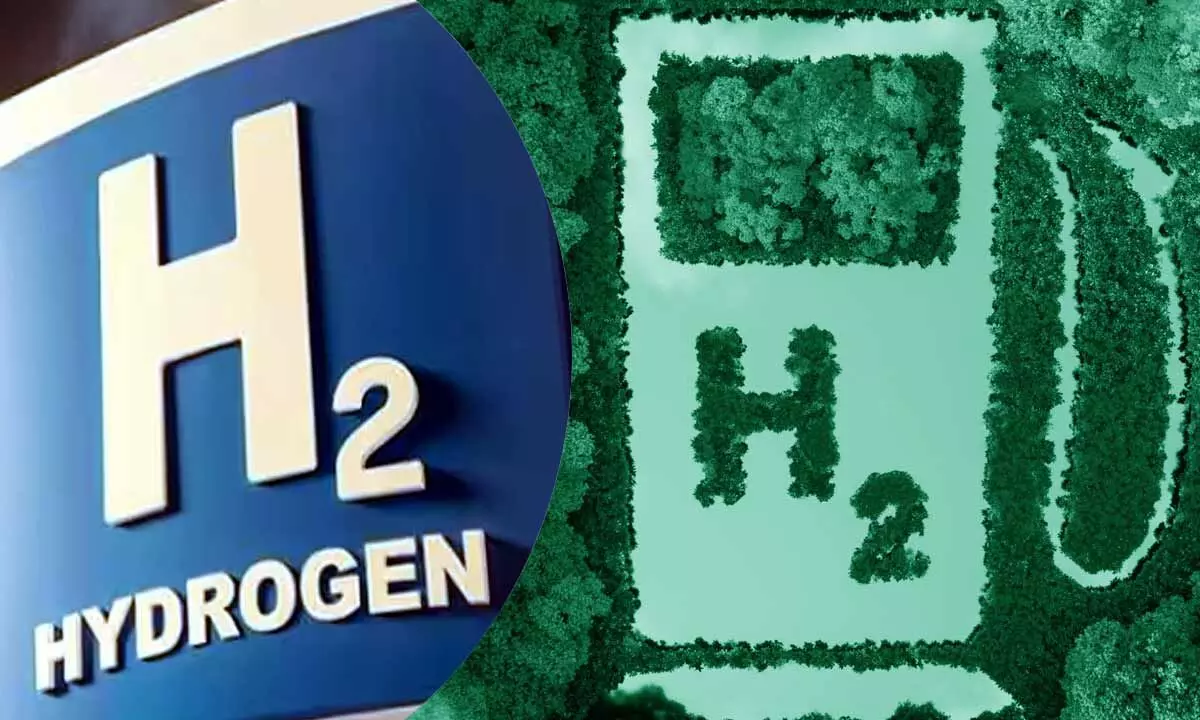Green hydrogen can enable energy transition in India's net-zero journey: WEF report
The report by WEF written in collaboration with Bain & Co, recommended five areas that can benefit from public-private interventions in expediting the adoption of green hydrogen in India. In 2022, India's energy import bill was at $185-bn, a figure that is sure to rise if the country continues to supply its growing energy demand through traditional methods
image for illustrative purpose

New Delhi: Green hydrogen in India can not only provide energy for sectors such as fertilizers, chemicals, refining and iron, but also save carbon emissions compared to fossil fuels, the World Economic Forum said on Wednesday. In a detailed analysis of what it will take to make green hydrogen a credible energy pathway in India, the report said, “Green hydrogen can enable energy transition as India takes its net-zero journey towards 2070 while supporting its growing energy needs.” The report by the World Economic Forum, written in collaboration with Bain & Co, recommended five areas that can benefit from public-private interventions in expediting the adoption of green hydrogen in India.
Hydrogen produced through the electrolysis of water and powered by renewable energy, which is known as green hydrogen, is considered a clean, flexible and versatile energy carrier that can also help address the tension between energy supply and climate change, the report said. India is currently the third-largest economy in the world in terms of energy needs, and the country's demand for energy is set to surge. The demand is estimated to grow 35 per cent by 2030. In 2022, India's energy import bill was pegged at $185 billion, a figure that is sure to rise if the country continues to supply its growing energy demand through traditional methods. At the same time, India set a commitment to achieve net zero by 2070 at the United Nations Climate Change Conference in Glasgow (COP26), held in 2021.
At the Glasgow summit, Prime Minister Narendra Modi had said, “Today, the whole world believes that India is the only big economy which has delivered both in letter and spirit on the Paris commitment. We are making every effort with determination.” The WEF report said green hydrogen is critical to help meet India's energy security needs while reducing emissions in hard-to-abate sectors on the path to net zero. The government had launched the National Green Hydrogen Mission in early 2022 with an aim to spur green hydrogen production and consumption through incentive funding of roughly $2.3 billion to be distributed between 2022 and 2030. Currently, India produces 6.5 million metric tonnes per annum (MMTPA) of hydrogen, predominantly for use in crude oil refineries and fertiliser production. Most of the country's current hydrogen supply is grey hydrogen, which is produced using fossil fuels in a process that creates CO2 gas emissions.
The National Green Hydrogen Mission has set a target for the production of 5 MMTPA of green hydrogen by 2030 - equivalent to roughly half of India's projected overall hydrogen demand of 11 MMTPA at that time. Green hydrogen production requires an ample supply of renewable energy for the electrolysis process. According to the report, India's renewable energy potential can support its goals for green hydrogen growth but needs rapid capacity addition. Also, there is limited on-the-ground traction for green hydrogen in the country, and key players have indicated that most are in a "wait-and-watch" phase. Many expect sizeable production of green hydrogen to take effect beginning in 2027 and after, according to the report.

